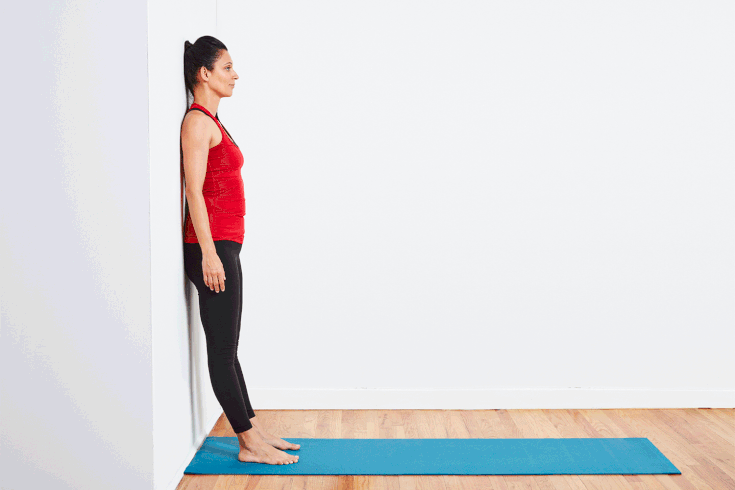Wall Pilates is gaining attention as an innovative and effective approach to improving overall fitness. By using the wall as a prop, this method offers an extra layer of support, making it accessible for individuals of all fitness levels. Whether you’re new to Pilates or looking for a way to diversify your workout routine, Wall Pilates can help you build strength, improve flexibility, and enhance balance with minimal equipment.
In this post, we will dive deeper into what Wall Pilates is, its benefits, and how you can integrate it into your workout routine for lasting results.

1. What is Wall Pilates?
Wall Pilates is a modification of traditional Pilates exercises where the wall is used as a prop to aid alignment, offer support, and enhance the movement of various exercises. Pilates itself is a workout method that focuses on strengthening the core, improving flexibility, and developing overall body awareness. Wall Pilates takes this concept a step further by utilizing the wall for proper posture correction, better stability, and deeper muscle engagement.
The wall serves as a point of contact for your body, allowing you to achieve more controlled and precise movements. Whether you’re working on core stability, leg strength, or balance, the wall is a great tool for guiding your movements and helping you achieve more effective results.
Related post: Pilates Workout: A Low-Impact Solution for Older Adults.
2. The Benefits of Wall Pilates
There are several compelling reasons to incorporate Wall Pilates into your fitness regimen. This workout method is especially beneficial for individuals seeking a low-impact, effective routine. Here are some of the key benefits:
1. Posture Improvement
The wall is a useful tool for helping individuals maintain proper posture throughout each movement. Proper alignment is a fundamental principle in Pilates, and by using the wall as a guide, you ensure that your spine is correctly aligned and your muscles are working in unison. This can be particularly helpful for people who spend long hours sitting at desks, as Wall Pilates can aid in realigning the spine and reducing the effects of poor posture.
2. Targeted Core Strength
One of the central focuses of Pilates is building core strength. The wall helps activate deeper muscles that are often harder to engage in traditional exercises. With Wall Pilates, your core muscles, including your abdominals, back, and pelvic floor, are engaged throughout the exercises, helping to strengthen these areas. Core stability is crucial for overall movement and balance, and Wall Pilates offers a more efficient way to strengthen these muscles.
3. Increased Flexibility
The support provided by the wall allows you to go deeper into stretches without worrying about losing your balance. As you move through various exercises, the wall can assist with alignment and deepen your stretches, improving your flexibility over time. By incorporating Wall Pilates into your routine, you can increase your range of motion, improve muscle elasticity, and reduce stiffness.
4. Low-Impact Exercise
For those with joint concerns or individuals recovering from injuries, Wall Pilates offers a low-impact alternative to more strenuous workouts. The wall offers support and cushioning, reducing the strain on joints while still providing an effective workout. This makes it an excellent option for people with conditions like arthritis, those recovering from surgery, or beginners just starting their fitness journey.
5. Enhanced Balance and Stability
Incorporating the wall into your workout routine helps you focus on developing stability and control. As you perform exercises, the wall provides a reference point for your body, which helps maintain alignment and balance. These exercises are particularly effective at improving proprioception, which is the ability to sense your body’s position in space. Stronger balance and stability help prevent falls and promote better movement efficiency.
6. Full-Body Workout
Though Wall Pilates primarily targets the core, it also strengthens other areas of the body. Depending on the exercise, you can activate your legs, glutes, arms, and back. By combining upper and lower body exercises, Wall Pilates offers a comprehensive workout that challenges multiple muscle groups at once. This full-body approach promotes functional strength, flexibility, and endurance.
3. How to Start Wall Pilates
Getting started with Wall Pilates is easy, and you don’t need any special equipment other than a wall and a comfortable space. Here are some exercises to incorporate into your routine:
1. Wall Squats

Wall squats are a simple yet effective exercise for strengthening your lower body, particularly your thighs and glutes. Stand with your back against the wall and feet about hip-width apart. Slowly slide down the wall into a squat position while keeping your knees behind your toes. Hold this position for a few seconds and then return to standing. This exercise engages the core and legs, helping to improve both strength and posture.
2. Wall Plank

A Wall Plank is a great exercise to engage the core and upper body while using the wall for support. To perform a Wall Plank, place your hands against the wall at shoulder height, and walk your feet back to create a straight line from your head to your heels. Hold the position, ensuring that your abs are engaged and your body remains in alignment. This exercise helps develop core strength, stability, and shoulder endurance.
3. Wall Roll Down

The Wall Roll Down is a stretching exercise that focuses on spinal flexibility. Stand with your back against the wall and your feet a few inches away from it. Slowly begin to roll your spine down one vertebra at a time, aiming to reach a standing stretch. Use the wall for support as you roll down and back up, which helps you control the movement while engaging your abdominal muscles.
4. Wall Bridge

The Wall Bridge targets the glutes, lower back, and core. To perform this exercise, lie on your back with your feet flat against the wall and your knees bent at a 90-degree angle. Press your feet into the wall and lift your hips into a bridge position, forming a straight line from your shoulders to your knees. Hold for a few seconds, then lower your hips back down. This exercise strengthens the glutes, engages the core, and helps with spinal alignment.
4. Tips for Success
Focus on Proper Alignment: Wall Pilates is all about alignment and control. Pay attention to how your body feels in each position and ensure that you’re maintaining the correct form throughout the exercises.
Breathe Deeply: Pilates emphasizes controlled breathing. As you move through each exercise, remember to inhale deeply through your nose and exhale through your mouth to help you engage your muscles more effectively.
Start with Basic Movements: If you’re new to Pilates, it’s important to start with basic movements and gradually build up your strength and flexibility. The wall provides extra support, but focusing on your form and breathing is key to making the most of each exercise.
Consistency is Key: Like any fitness program, the benefits of Wall Pilates come with consistency. Aim to practice at least three times a week for optimal results. As you continue, you can increase the intensity by adding more advanced exercises or holding positions for longer periods.
Conclusion
Wall Pilates is an excellent way to enhance your fitness routine by targeting key muscle groups, improving flexibility, and boosting posture. Whether you’re a beginner or an experienced Pilates practitioner, this method offers a low-impact way to strengthen and stabilize your body. The wall serves as a supportive partner in your workout, helping you achieve better alignment and more controlled movements.
By adding Wall Pilates to your fitness plan, you’ll experience improved strength, flexibility, and balance, all while reducing the risk of injury. So, grab a wall and get started – you’ll soon feel the benefits of this gentle yet effective workout!
Become a part of a supportive community focused on health and wellness. Connect with us on Threads!
Further Reading and resources
For more in-depth information and resources, consider the following:



